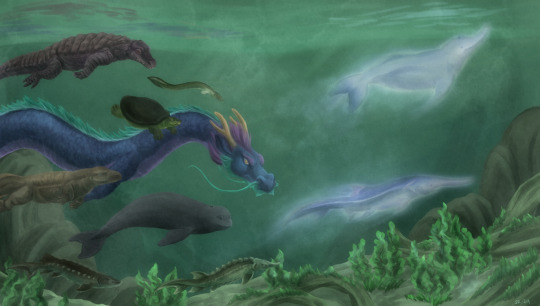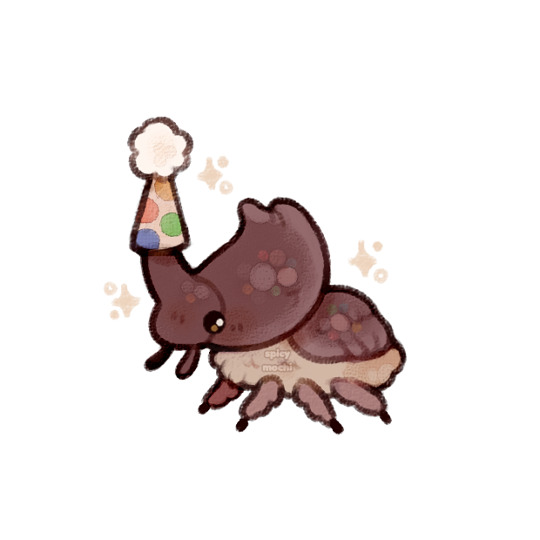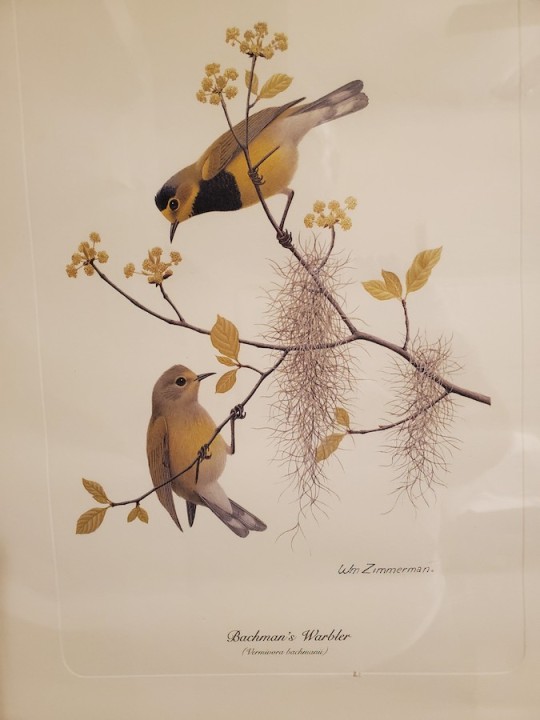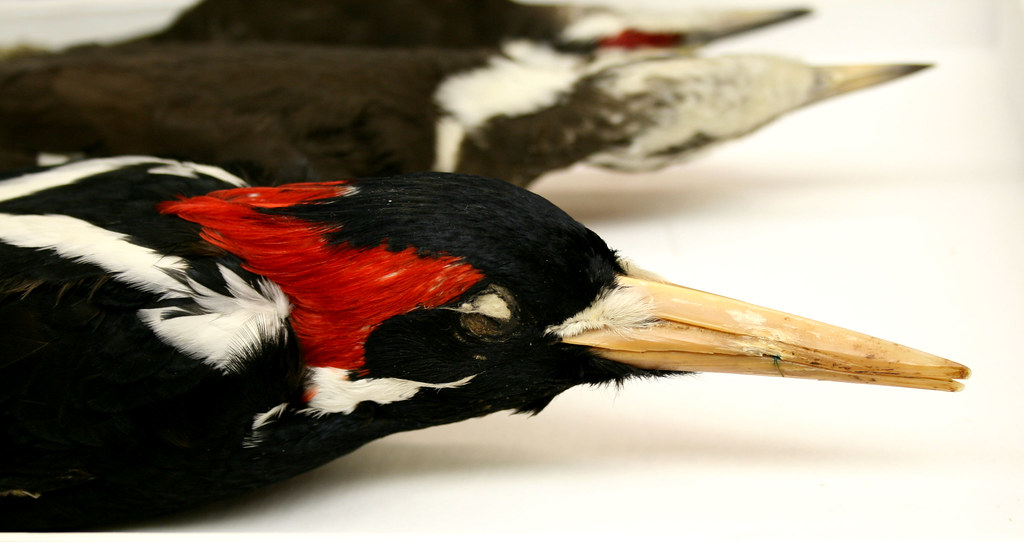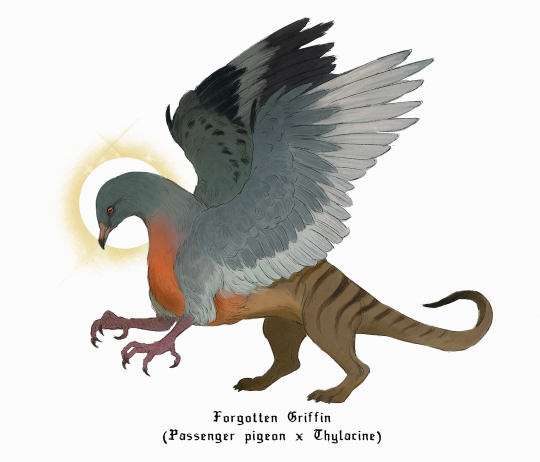Text
entomologists should avoid FSCA (Gainesville, FL) at all costs
I’m going to go into more detail about my workplace eventually but for now it’s important to make public that ethanol holdings in the Florida State Collection of Arthropods (FSCA, Gainesville) are completely neglected and actively rotting. Holotypes (the original specimen of a plant or animal used to define a species, completely priceless and the pride and joy of any good collection) are already ruined. Don’t ever donate your stuff there, it will go to waste.
Everything that is not personally interesting to the administrators has clearly been totally ignored for decades and priceless scientific information has been lost as a result. It is the worst I have ever seen, having worked in three other collections previously. I was lucky I had not formally donated most of my own collection material there because I guarantee they would have barred me from ever accessing the specimens again and then neglected them all to destruction anyway. Other people have not been so lucky and multiple scientists have their life’s work trapped in there and deteriorating. Admin is not above blocking former employees or whistle blowers from using the collection, even if it is your own material.
Here is how FSCA was keeping the holotype of the rare cave millipede Scoterpes rudis. The ethanol should be clear, but I had to fish the actual specimen out of the opaque yellow slime with forceps. Many others were just like this when I found them, and I did my best to care for them all but there was clearly already permanent damage years before I was even hired. I’m really sorry for the poor solifugid biologist who has to try to get useful information out of the holotype that is just a small wad of legs and glue now.

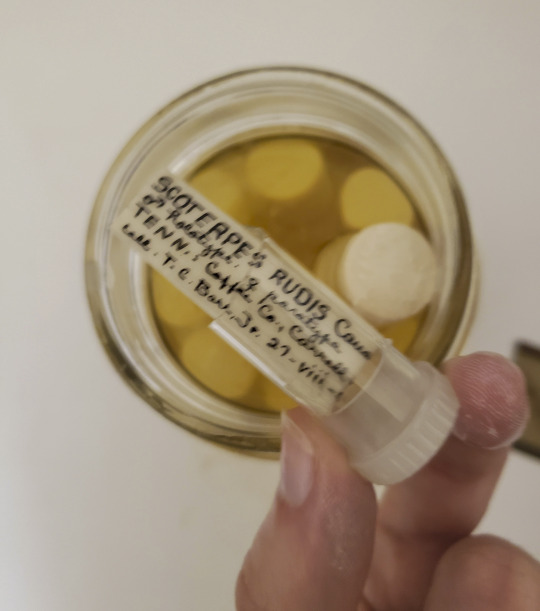

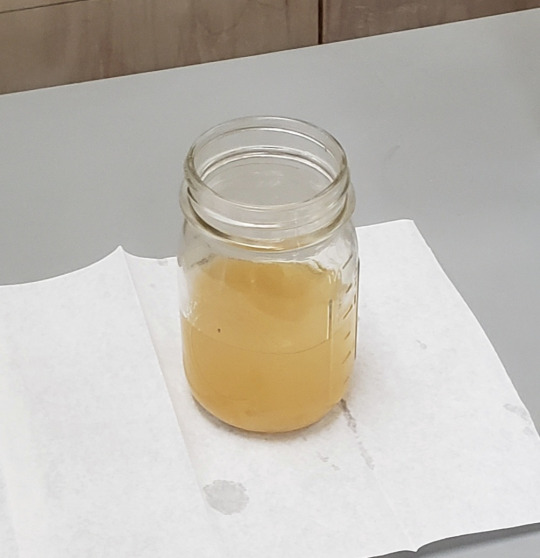
Many of the specimens, including some holotypes, are like this centipede, with the rubber stopper having degraded into a glue-like material and dripped onto the specimen. Reaching this state requires years of total neglect because you can see the rubber start to wilt long before it drips. All it takes to fix this is replacing the stopper more than once in a century, but apparently that was too much to expect of the “world class” FSCA.

FSCA higher-ups recently presented a big cheesy video at the Entomology Society of America meeting in Nov 2022 in Vancouver, patting themselves on the back for the size of the collection and soliciting new collaborators and donations. They are constantly seeking to acquire more material even though they are running out of space and totally incapable of maintaining what they have already. The other staff are completely aware, but apparently only concerned with their own personal research material and individual favorite bugs.
I would appreciate if you all could share this with anyone you know interested in entomology, natural history collections, or biology in general. I suspect my former position will open for new applicants almost immediately because of how many different aspects of the operation I supported out of a genuine love for entomology and curation. Now that I am gone, the ethanol collection is likely completely abandoned. Please do not give this pathetic institution and its staff more things to ruin.
-Mossworm
8K notes
·
View notes
Text

My take on the broad-billed parrot!
It must have been quite the weird guy when it was around.
Details under cut
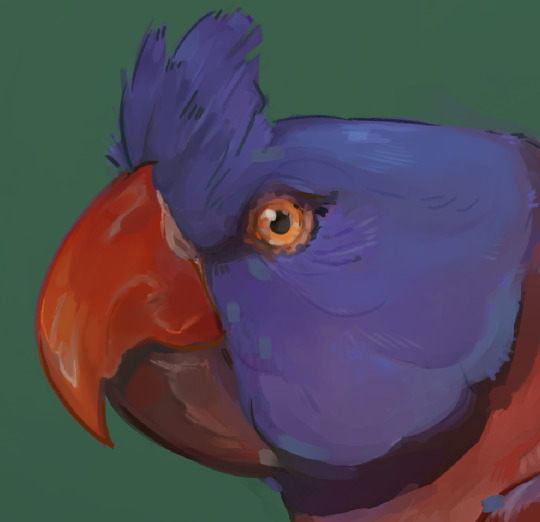


75 notes
·
View notes
Text
platforming palestinian joy is just as important as sharing the suffering they're enduring during this genocide. despite continued displacement and bombardment, you cannot steal their joy and spirit. happy birthday to this sweet baby 🖤🇵🇸 may they grow up to see a free palestine
31K notes
·
View notes
Video
A male ivory-billed woodpecker skin from the Smithsonian National Museum of Natural History’s ornithology collection. [ x ]
94 notes
·
View notes
Text
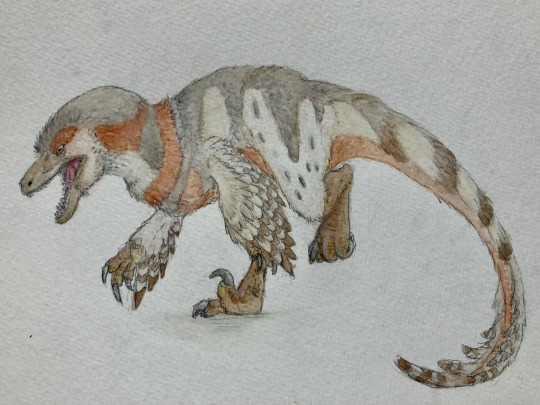


utahraptor watercolour
am I the only one who finds utahraptor seriously terrifying? I mean think how scary being attacked by a massive bird of prey today would be... then make it bigger than a grizzly bear with an extra set of claws on its arms and jaws bigger than your face
I get it, it's not as big as tyrannosaurus or allosaurus or giganotosaurus or other large famous theropods... but it was faster than them as well, no? And maybe even a pack hunter....
those outward curving teeth get me too idk why
please tell me it's not just me
77 notes
·
View notes
Text

some birds declared extinct this year
bachman's warbler | bridled white-eye | kauai akialoa
722 notes
·
View notes
Text
every single day I think about how american black vultures are known for engaging in allopreening (preening between different species)
and they have a specific relationship with crested caracaras, in which the black vultures assist them by not only preening them after meals but also leading them to food in the first place— due to their superior sense of smell— while the caracaras assist the black vultures by acting as a warning signal in case of danger
and while this is more typical of black vultures, this is not common at all for any member of the falconidae family— it’s a special bond!

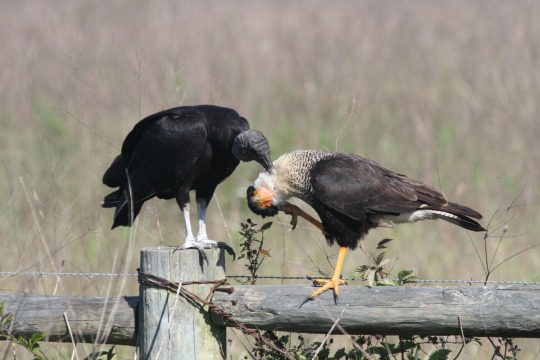
yet another post in favor of vultures everyone , hope you enjoy:) and I implore you to do some more research on these incredible birds !!
34K notes
·
View notes
Text
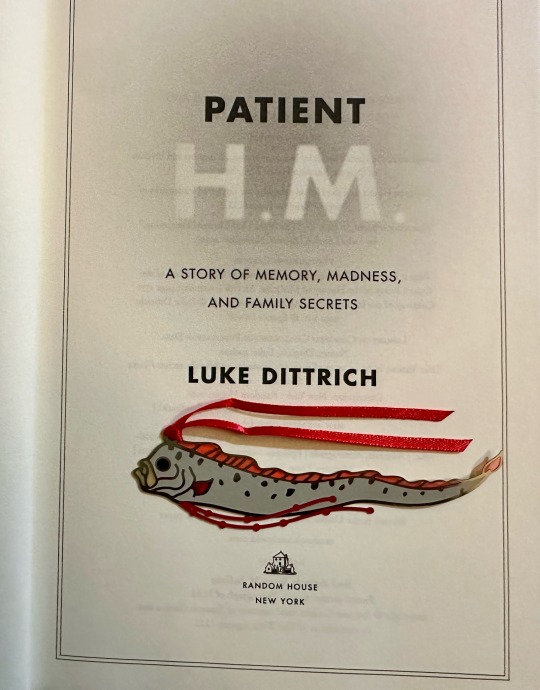
Downright chuffed about this oarfish bookmark I bought years ago in Japan and just rediscovered in my drawer. It’s made of shiny metal and the head crest is soft ribbon.
501 notes
·
View notes
Text
What’s Killing Hawaii’s Forest Birds?
In the last 200 years, 17 out of 41 species of Hawaiian honeycreeper have gone extinct. Another 14 are endangered.
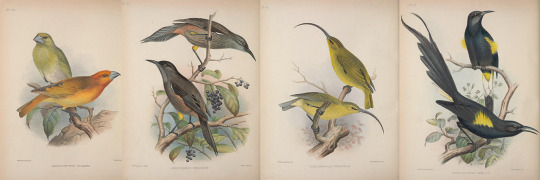
Extinct Hawaiian Honeycreepers (Left to Right): Greater Koa Finch (Rhodacanthis palmeri), Kauai ‘O'o (Moho braccatus), Hawaii 'Akialoa (Hemignathus obscurus), Hawaii 'O'o (Moho nobilis)
From: Birds of the Sandwich Islands, By Wildon Scott (1899)
Courtesy of the Smithsonian Institute
In the early 1900’s, a silent killer began stalking the natural and cultural heritage of Hawaii. From the mountains to the shoreline (mauka to makai) the forests of Hawaii were falling silent. Something was killing Hawaii’s honeycreepers - a unique family of birds not found anywhere else on the planet.
The ancestors of the honeycreepers arrived on the newly formed Hawaiian islands millions of years ago and quickly evolved to fill the empty landscape with dozens of new and unique species, a process called adaptive radiation.
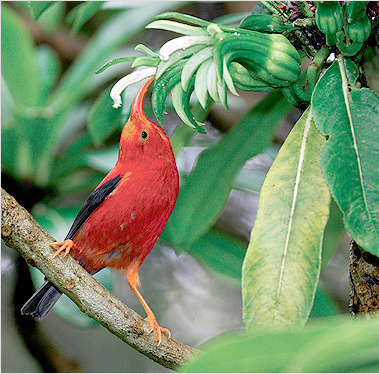
An feeds i’iwi on a lobeliad flower. Photo Credit: Jack Jeffrey
Naturalists began to record the disappearances of many endemic Hawaiian species in the late 1800’s. Habitat loss and introduced predators like cats, rats, and pigs were taking their toll on all of the native plant and animal populations.
But as the decades passed and the species continued to disappear, it seemed as if something other than habitat loss and predation was impacting Hawaii’s birds - particularly the honeycreepers. The huge flocks of ‘I’iwi that once roamed the mountainsides foraging for food had disappeared, even from seemingly pristine lowland forest.

Endangered Hawaiian Honeycreepers (Left to Right) Akiapolaau © Jack Jeffrey Photography, Akohekohe © Jack Jeffrey Photography, Amakihi © Jack Jeffrey Photography, Hawaii Akepa © Jack Jeffrey Photography
By the 1960’s biologist Richard Warner believed he had identified the culprit. The answer lay in the pattern of disappearance. The birds were disappearing from healthy lower elevation forests but were still present in the higher elevation forests where the temperatures were cooler. Whatever was killing the birds, it was only happening at lower elevations. The culprit, he theorized, was a disease found commonly in bird species across the planet - mosquito borne avian malaria.
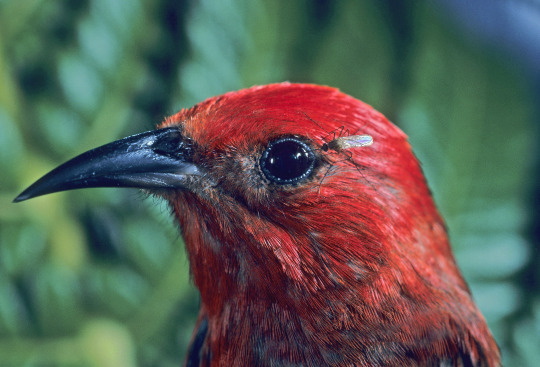
Apapane with a mosquito. Photo © Jack Jeffrey Photography
Avian malaria itself probably came to Hawaii in the early 1900’s when domesticated birds were imported into the lowland cities. These introduced birds almost certainly carried avian malaria, but the disease never would have spread to the native bird population if it hadn’t been for another earlier invader - the mosquito Culex quinquefasciatus. The Culex quinquefasciatus species is the only known vector of avian malaria. Without Culex, the disease cannot spread.
In the vast majority of bird species, the parasites (members of the genus Plasmodium) have little to no impact on the health of the infected birds. Long exposure to the parasite has allowed most species around the world to evolve effective disease resistance.
For many of Hawaiiʻs forest birds, which evolved in the isolation of the world’s most remote archipelago without exposure to malaria or mosquitoes, the impacts have been catastrophic. Wherever the forest birds range overlapped with mosquito populations, the birds have disappeared.
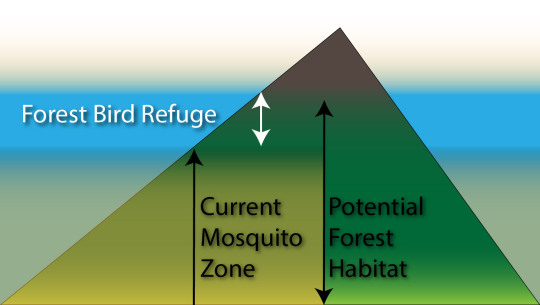
Mosquitos breed and thrive at lower and warmer elevations where they infect birds with avian malaria and pox. Higher and cooler elevation forests, where mosquitoes and their diseases do not thrive, have become the only refuges for Hawaii’s forest birds, but even those areas are now under threat. As temperatures rise, mosquitoes, and the avian diseases they carry, have begun to spread upwards into the mountains further constricting habitat.
“For decades, we had reached this equilibrium. The birds had moved into the upper elevation forests where they had this area of refuge from mosquitoes and avian malaria, but now that’s being threatened,” said Josh Fisher, Invasive Species Biologist with the Pacific Islands Fish and Wildlife Office .
Today, nearly every species of Hawaiian honeycreeper is facing shrinking ranges and declining populations. In the last 200 years, 17 out of 41 known species of honeycreeper have gone extinct. Another 14 are endangered. On the island of Kauai, every species of native forest bird is in decline. Ninety percent of the ‘i’iwi’ population is confined to a narrow band of forest on the windward slopes of the island of Hawaii, between 4,000 and 6,000 feet (1,300 and 1,900 meters) in elevation. “We are at this point where some of these populations are so low or so dependent on a single area, that a single catastrophic event could spell the end of a species” said Josh Fisher, Invasive Species Biologist with the Pacific Islands Fish and Wildlife Office .
“There’s an urgency now that didn’t exist before because warming temperatures are already starting to push mosquitoes into the upper elevations of places like Kauai. There really isn’t anywhere else for these birds to go. They can’t go down and they can’t really go up much higher.”
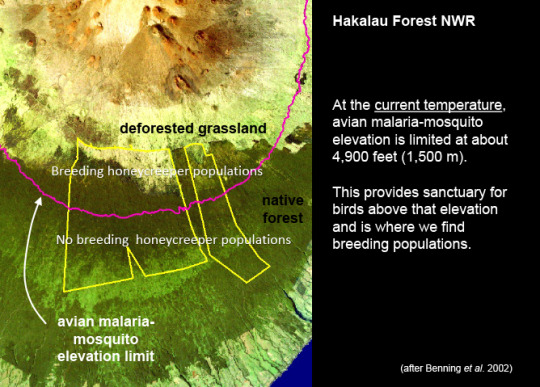
For decades researches have watched as avian malaria reduced bird ranges and pushed population declines across all of the low elevation forests of Hawaii. “We’ve known what the problem is, but with avian malaria there isn’t a tool that we can just pull out of a box to fight this. We have to develop the tool,” said Fisher.
Places like Hakalau Forest National Wildlife Refuge are tackling habitat loss by aggressively planting native species and restoring forests. James Campbell National Wildlife Refuge and Kilauea Point National Wildlife Refuge are using predator proof fences to keep out invasive predators and protect birds. But introduced diseases are more difficult to address. “Fortunately over last decade there have been significant advances in how to address mosquitoes at the landscape scale,” said Fisher.
Biologists and conservationists across Hawaii are working to find ways to save the honeycreepers: from dealing with predation by introduced species to landscape scale control of mosquitoes. Now more than ever, it is important to work with our partners to protect these species for future generations.
This story is part of a series examining the issues impacting Hawaii’s forest birds. Read the other stories in the series here.
Hawaii’s Magnificent Forest Birds
ʻŌhiʻa lehua: the Foundation of Hawaii’s Forest Ecosystem
Want to dive deeper?
Collapsing avian community on a Hawaiian island
Paxton, Eben; Camp, Richard J.; Gorresen, P. Marcos; Crampton, Lisa H.; Leonard, David L.; VanderWerf, Eric
Abundance, distribution, and population trends of the iconic Hawaiian Honeycreeper, the ʻIʻiwi (Vestiaria coccinea) throughout the Hawaiian Islands
Paxton, Eben H.; Gorresen, P. Marcos; Camp, Richard J.
Large-Scale Range Collapse of Hawaiian Forest Birds under Climate Change and the Need 21st Century Conservation Options.
Fortini LB, Vorsino AE, Amidon FA, Paxton EH, Jacobi JD
For more stories of conservation in the Pacific, follow https://www.facebook.com/pg/PacificIslandsFWS
122 notes
·
View notes
Text
“Everything touches me—I see too much, I hear too much, everything demands too much of me.”
—
Clarice Lispector II Why This World: A Biography of Clarice Lispector
(via violentwavesofemotion)
31K notes
·
View notes
Text


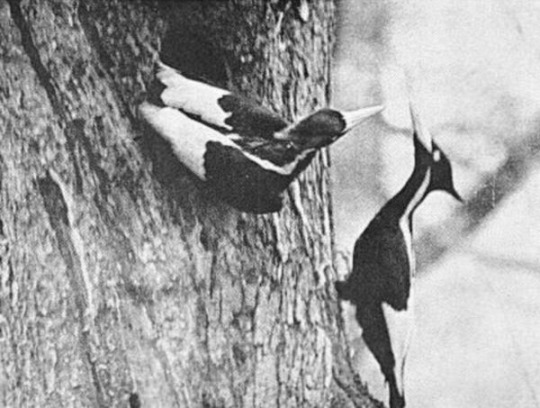

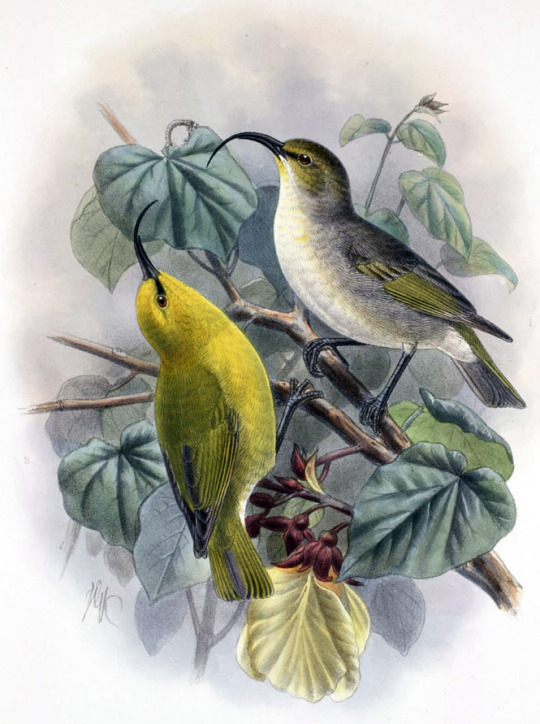

On September 30, 2021, the U.S. Fish and Wildlife service has proposed to de-list 23 species and declare them extinct. Official government source here. Species information is from Wikipedia.
This is PART 1 with birds only. I will upload more species later.
Vermivora bachmanii (Bachman's warbler) was threatened by habitat loss, hunting, and a hurricane in 1932, and its last confirmed sighting was in 1988. (image)
Zosterops conspicillatus (bridled white-eye) is extinct in Guam but some subspecies may exist elsewhere, but I cannot find much information about it. (image)
Campephilus principalis (ivory-billed woodpecker) declined due to habitat destruction and has not had a confirmed sighting since 1944. (image)
Akialoa stejnegeri (Kauai ʻakialoa) was a Hawaiian honeycreeper that declined due to habitat loss and due to diseases spread by mosquitos introduced in 1826; the last confirmed sighting was in 1967. (image)
Hemignathus hanapepe (Kauaʻi nukupuʻu) was a Hawaiian honeycreeper that lost its habitat from slash-and-burn farming and was likely extinct by the early 1900s. (image)
Moho braccatus (Kauaʻi ʻōʻō) was a Hawaiian songbird that declined due to habitat destruction and invasive species such as the rat, pig, and mosquito. They were last seen in 1985 and the last song recording of a lone male was taken in 1987. (image)
40 notes
·
View notes

